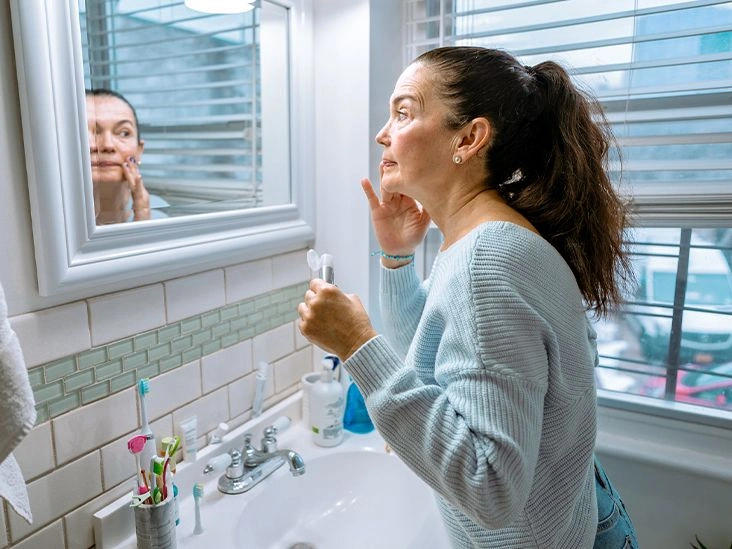Uneven skin tone may push you toward skin-lightening treatments, but their benefits can be limited and the potential harms significant. The safest approach to caring for your skin is consistent sunscreen use and consulting a dermatologist.

From freckles and age-related spots to scars, many factors can create an uneven complexion. Although usually harmless, uneven pigmentation often motivates people to try various lightening remedies.
There are numerous skin-lightening products and techniques available, but they vary widely in quality and safety — some may even be hazardous. Understanding the options can help you pick a safer path if you want a more balanced skin tone.
Hyperpigmentation, or dark patches, can result from acne scarring, excessive sun exposure, or hormonal fluctuations, according to David E. Bank, MD, of NewYork-Presbyterian Hospital.
“There are a range of creams and serums patients can use to help lighten, brighten, and reduce dark areas over time,” he noted.
Each treatment avenue carries its own risks. Read on to learn which options might suit you best.
Hydroquinone creams and serums
Topical products containing hydroquinone (HQ) are among the most commonly used spot-targeted lightening treatments.
A 2023 review of studies found HQ effective at diminishing hyperpigmentation. Researchers suggested using 2% to 5% HQ once daily, with visible benefits appearing in 5 to 7 weeks. Treatment should continue for at least 3 months and can extend up to a year.
Previously available over the counter, HQ’s status changed in 2021 when the U.S. Food and Drug Administration (FDA) limited its availability to prescription only.
Although considered safe in cosmetic applications, HQ concentrations are restricted because higher amounts increase the chance of adverse effects.
Always follow a clinician’s instructions when using HQ. Stop immediately if you notice irritation, unusual darkening of the skin, or other concerning reactions.
Retinoid solutions
Medications such as Retin-A and Renova offer another route. They contain retinoic acid, which boosts cell turnover, accelerates exfoliation, and promotes the emergence of fresh, healthier skin.
Research has linked retinoids to improvements in photoaging, including benefits seen in darker skin types.
These agents can be drying and increase sensitivity to sunlight. If you choose retinoids, know that results may take several months or longer, and daily sunscreen is essential.
»Learn moreHow to use retinol safelyLaser treatments and peels
A more intensive approach for fading dark spots is laser therapy, which employs focused light energy. Some lasers directly target pigment, while others remove skin layers gradually.
This method essentially burns away the pigmented layers of skin.
There are multiple types of laser procedures. They generally act faster than topicals but carry greater risk.
Possible side effects of laser skin lightening include:
- swelling
- redness on lighter skin tones
- darkening or lightening of darker skin tones
- a feeling of tightness
- scarring
- infection
- altered skin texture
Chemical exfoliators
Chemical exfoliants typically use various mild acids to dissolve dead skin cells or remove the uppermost skin layer. Shedding that layer can reveal more even, healthier-looking skin underneath.
Although many chemical exfoliants are gentler than physical scrubs like sugar exfoliators, they can still provoke irritation.
Common chemical exfoliant ingredients include:
- alpha hydroxy acid (AHA)
- azelaic acid
- beta hydroxy acid (BHA)
- glycolic acid
- lactic acid
- mandelic acid
- salicylic acid
These products are available over the counter or in stronger strengths through a physician or dermatologist.
Use chemical exfoliants sparingly. Skin needs time to repair, and overuse can cause irritation or inflammation.
Some people are particularly sensitive to certain chemical agents. If you experience adverse effects, discontinue use of that product.
Other solutions
There are OTC formulations that advertise lightening or “correcting” effects using natural components. Dr. Bank says typical ingredients in these products include:
- vitamin C
- azelaic acid
- pomegranate extract
- beta carotene
- licorice extract
These products still carry risk. Even “natural” ingredients can cause sensitivity or allergic reactions in some people.
For readers interested in topical brightening ingredients, this article naturally complements guides on beauty skin care vitamin c serums and other corrective serums.
Preventing dark spots
For most people, the benefits of skin-lightening products are modest compared with their risks.
Preventing skin damage in the first place is often the best strategy. Continuing to protect your skin even after spots appear will help prevent them from worsening.
“Strict sun protection is crucial for fading dark spots,” said Bank. “Using products with blockers like zinc oxide and titanium dioxide is essential. Otherwise, spots can return even after they’re treated.”
Seeing a dermatologist can point you toward treatments with the best results and the least hazards.
Takeaway
If dark patches on your skin trouble you, several approaches exist. A physician can prescribe a hydroquinone-containing treatment to apply directly to spots daily. Retinoids can speed cell turnover but may cause dryness.
Other options include laser procedures and chemical exfoliants such as AHAs and salicylic acid.
Always adhere to OTC product instructions and use prescription therapies exactly as directed by your doctor.


















Leave a Reply
You must be logged in to post a comment.